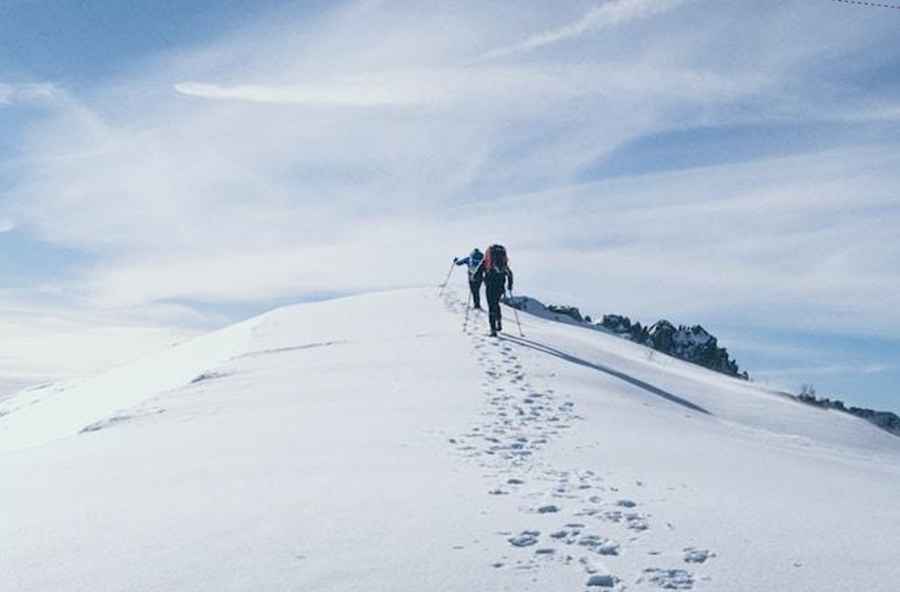Wilderness First Aid for Climbers: Essential Skills and Techniques
Climbing mountains can be associated with many risks to the climber's health or even life. Unfortunately, it is not uncommon for accidents to occur while traveling in the mountains. It is worth remembering here that, depending on the type and extent of injuries, first aid may be needed. When climbers are out in the wilderness, access to medical care may be limited or nonexistent. Therefore, knowledge of basic first aid skills and techniques is critical for climbers.

If, during the ascent, someone was seriously injured, then it is worth performing these three actions:
- Try to call for help;
- Provide first aid to the victim;
- If necessary, transport the victim to a place where special services can reach you and provide him with qualified medical assistance.
Call for help
Calling for help is the most important moment in helping the victim. Often, a person's life depends on how quickly specialized assistance arrives. In mountains and rugged terrain, there are three main and best ways to contact the outside world:
- Walkie-talkie;
- Satellite phone;
- Using eSIM on your phone.
What is eSIM
Not all climbers have a long-range walkie-talkie or satellite phone at their disposal. And ordinary operators often do not cover places with their network, far from the city, but even more so in the mountains. Then eSIM may come in handy.
That is a virtual SIM card that is built directly into your smartphone or other device. Unlike a traditional physical SIM card that must be physically inserted into the device, a digital SIM card is software that can be activated and configured without using a physical card. They are becoming more and more popular among iPhone and Android owners. It is enough to install the Yesim app from the App Store or Play Market, make all the necessary settings, and you will be able to use your eSIM card. Such an eSIM card is more reliable, and the virtual eSIM from Yesim also stands out for its good connection and can be used in rural or inaccessible areas.
The main types of injuries and how to care for them
Stop bleeding
If any of your party members are bleeding, you need to stop them as soon as possible. Apply direct pressure to the wound with a clean cloth or dressing to stop the bleeding. If the wound is severe, you can use a tourniquet over the bleeding site, but be careful not to overstretch.
Fracture immobilization
To avoid further damage, you must create immobilization if any of your teammates have fractures. Use sticks or walking poles as temporary assistance to provide sturdy support around the fracture. Following that, connect the support with a rope or scarf.
Relief for bruises and sprains
Apply ice or a cold compress to the affected area if one of your companions has a bruise or sprain to minimize swelling and inflammation. Use bandages or elastic bandages to support the damaged area while it rests.
Resuscitation
Cardiopulmonary resuscitation (CPR) should be begun right away if someone in your group experiences cardiopulmonary failure and stops breathing. If you have received CPR training, continue performing rescue breaths and chest compressions in accordance with the instructions provided.
Hypothermia, frostbite
Warm the victim, replace damp clothes with dry ones, and offer hot sweet tea. Gently knead frozen areas with your hands or a woolen cloth. You can not use snow and fat for rubbing, as is sometimes advised.
Warm up slowly. Rapid heating (for example, too close to a fire) will dilate capillaries but not larger vessels, which again disrupts tissue nutrition. In no case should you drink alcohol, its warming effect is contrived, and intoxication will aggravate the situation.
First aid for anaphylactic shock
Anaphylactic shock is an acute and potentially dangerous allergic reaction of the body to an allergic substance. If a climber experiences anaphylactic shock (redness and swelling of the skin, difficulty breathing, fainting, etc.), call emergency medical assistance immediately, if possible. At the same time, if the victim has adaptol or auto-enforcer epinephrine, help him use this medicine as instructed.
Mountain or altitude sickness
Treatment of mountain sickness begins with the first symptoms, but the first aid of fellow travelers is needed for severe and moderate courses. Arranged parking and physical rest. Plentiful drinks, antiemetic drugs, sour fruits – for nausea are offered. In case of deterioration, use an oxygen mask and immediately lower to a height of at least 2000-2500 meters, from where you can transport yourself to the hospital.
Conclusion
Climbing mountains is associated with huge risks. These are just a few of the basic first-aid skills and techniques that can be helpful for climbers in the wilderness. Therefore, we advise you to prepare properly, take the necessary and good equipment with you, such as a first aid kit, eSim, and quality climbing gear, and complete first aid and rock climbing courses. You should also go with knowledgeable people, you should not go on such trips alone.